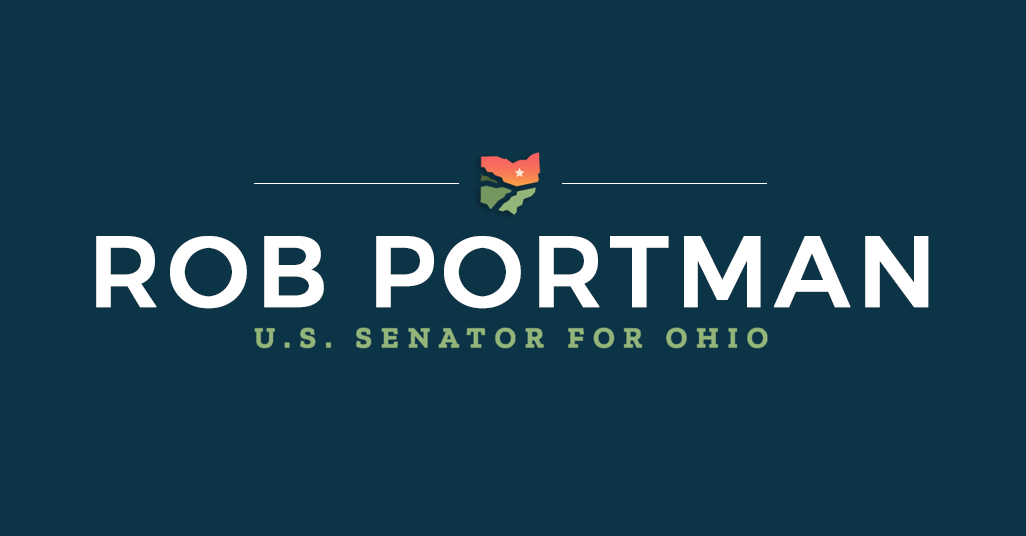Source: United States Senator for Ohio Rob Portman
November 16, 2021 | Portman Difference
The bipartisan Infrastructure Investment & Jobs Act (IIJA) makes an historic investment in America’s core infrastructure needs – roads, bridges, ports, broadband, water infrastructure, and other important assets. The law, which has been endorsed by more than 100 industry associations, trade groups, and unions, will create jobs, increase productivity, and pave the way for decades of economic growth and prosperity – all without raising taxes or increasing inflation.
Senator Portman played a key role in crafting the legislation, which President Biden signed into law on Monday, that will address specific infrastructure needs across Ohio.
Here is how the bill could benefit Central Ohio:
Roads and Bridges
The bipartisan IIJA provides $110 billion in new funding for roads and bridges, including $9.2 billion that will come directly to Ohio to help with roads and highways and $483 million to help with Ohio bridges.
In addition, Ohio projects will also be able to apply for tens of billions in additional competitive grant funding opportunities, including $12.5 billion in the new the Bridge Investment Act, $5 billion in a new National Infrastructure Project Assistance grant program to help with large projects, $7.5 billion in the RAISE (formerly BUILD) grant program, and $8 billion in the Infrastructure for Rebuilding America (INFRA) grant program.
This funding could be used to fund projects like The Columbus Crossroads/Innerbelt corridor project which will complete a comprehensive reconstruction of the Interstate 70/71 Innerbelt through Downtown Columbus. The larger corridor also includes Interstate 71 between Frank Road/SR 104 and SR 315, including widening and interchange reconstruction. More than $450 million has already been invested in initial phases that are complete or under construction. This project recently received a $25 million INFRA grant.
In addition, these grant programs can be used to help fund The I-70 to US 33 Connector project will construct a parkway between Interstate 70 and US 33 to the east of the City of Pickerington. Once completed, the roadway will have two lanes in each direction.
The bipartisan infrastructure legislation also provides a 10 percent set aside within the surface transportation block grant program to states for recreational trails and other transportation alternatives. This provision will provide $7.2 billion nationally over the next five years. Some of that funding – in addition to competitive grants like the RAISE grant program – could be used to complete projects like the LinkUS, Central Ohio’s transformational and comprehensive prosperity and mobility initiative, which includes high capacity and advanced rapid transit, bikeways, green space, roadways, pedestrian improvements, and development along key regional corridors throughout the Columbus Region.
Airports
The IIJA also includes $25 billion in grant funding to support our nation’s airports. This funding could be used to fund airside and landside airport improvements at John Glenn Columbus International Airport, including terminal improvements like the One International Gateway project. The new terminal is one component of a midfield development program that includes parking structures, rental car facility, utility plant, shipping and receiving center, and space for hotels and restaurants.
The Rickenbacker Area Access project at The Rickenbacker International Airport could also benefit from this airport funding – as well as the RAISE grant program. The Area Access project will improve multiple access points to accommodate additional economic growth and leverage the area’s freight and logistics assets. Alum Creek Drive will be widened from 4 to 6 lanes between Groveport Road and SR 317. Additional projects will increase safety and capacity of other primary corridors, as recommended by the Rickenbacker Area Study.
Broadband
The IIJA includes $65 billion for broadband, including more than $42 billion to states, U.S. territories, and the District of Columbia via block grants. This is consistent with Senator Portman’s bipartisan BRIDGE Act proposal to help close the gap in access to reliable high-speed internet that persists in certain communities. Ohio is set to receive hundreds of millions in broadband deployment dollars that the state could use this funding to help expand access throughout Central Ohio, making a difference in the lives of students, workers, and families.
Water Infrastructure
The law includes the bipartisan Drinking Water and Wastewater Infrastructure Act and provides $23.4 billion for the Drinking Water and Clean Water State Revolving funds, which help finance a variety of water infrastructure projects such as stormwater projects and the construction of water treatment facilities.
One example of a project that could benefit from this funding is the Central Alum Creek Water Reclamation Facility project, which plans to construct a new sanitary sewer plant to provide sewer service to portions of Berlin and Berkshire Townships surrounding Alum Creek. The plant will have an initial capacity of 800,000 gallons per day and will be expandable to treat 2.4 million gallons per day.
###
